A properly tied 4-strand rope ensures strong anchoring, protects your fishing gear, and extends the rope’s lifespan — even in rough sea conditions. However, not everyone knows the correct tying method to achieve maximum safety and durability.
In this article, SIAM Brothers Vietnam shares a step-by-step guide on how to tie a 4-strand rope safely and correctly according to marine standards — helping increase friction, distribute tension evenly, and ensure long-term reliability. Let’s explore each step to keep your operations safe and steady offshore!
1. What Is a 4-Strand Rope and Why Is It Commonly Used for Boat Anchoring and Net Rigging?
A 4-strand rope is made from four primary strands twisted tightly together in a symmetrical structure, creating exceptional strength and load-bearing capacity. Thanks to this design, the rope provides:
- High friction, preventing slippage when tying anchors or securing fishing nets.
- Moderate elasticity, reducing stretch under strong waves.
- Durable construction, resistant to abrasion, seawater, sunlight, and salt corrosion.
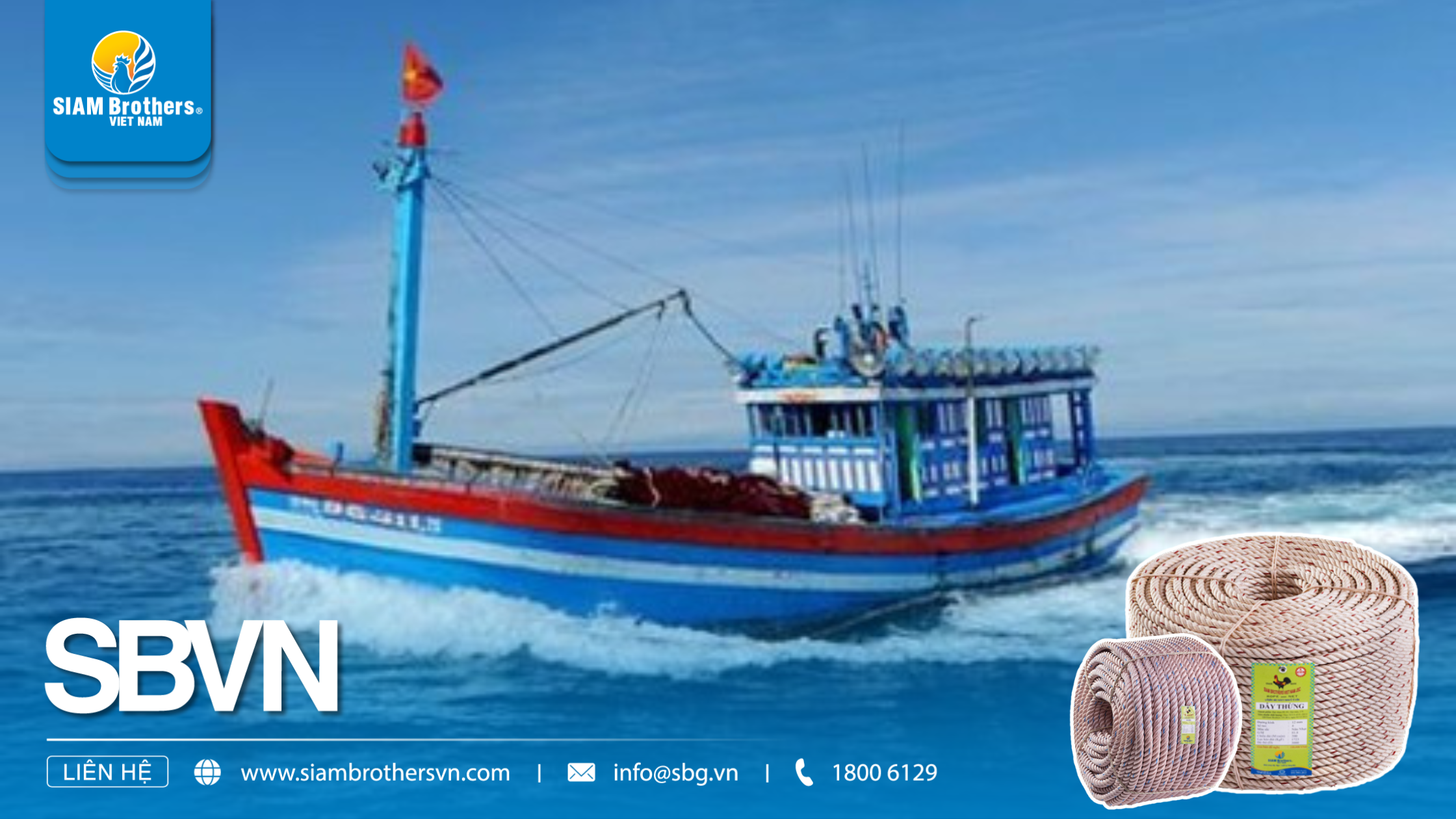
Why Fishermen Prefer 4-Strand Ropes for Anchoring and Net Rigging
In the fishing industry, choosing the right rope directly impacts vessel safety and catch efficiency. The 4-strand rope is a top choice because it offers:
- Strong anchoring stability: Its 4-strand twist distributes tension evenly, keeping the anchor secure in high winds.
- Ease of handling: Simple to tie, untie, or splice without tangling — suitable for both small and large boats.
- Anti-twist performance: Maintains structure under tension, preventing rope twist and tangling.
- Versatility: Compatible with various anchors, buoys, and net systems.
- Durability and cost efficiency: Longer lifespan compared to 3-strand ropes, reducing replacement costs over time.
2. Preparation Before Tying a 4-Strand Rope
2.1. Inspect the Rope’s Condition
Before starting, always inspect the 4-strand rope to ensure maximum safety and performance:
- Check the rope surface: Look for signs of fraying, cracks, or fading due to salt exposure.
- Verify twist integrity: Ensure the strands remain tightly woven without separation.
- Clean the rope: Remove sand, salt, or grease to improve grip and knot strength.
- Measure the required length: Estimate the rope length needed for the anchor or net — too short may fail, too long can tangle.
Pro tip: If your rope has been used for a long time, trim worn ends and heat-seal them to prevent unraveling.
Proper preparation ensures both efficiency and safety:
- Anchor, ring, or mooring hook: Clean, dry, and rust-free to prevent slippage.
- Protective gloves: Provide grip and prevent rope burns when tightening.
- Stable workspace: Choose a dry, flat, well-lit surface to clearly observe each movement.
2.3. Identify the Purpose of Tying
Depending on your intended use, the tying method for a 4-strand rope will vary:
- For anchoring boats: Use knots with high tension resistance and easy untying capability.
- For net rigging: Choose flexible knots that do not deform or damage the net.
- For rope joining: Ensure strands interlock firmly without slipping under tension.
2.4. Expert Tips from SIAM Brothers Vietnam
Based on real-world experience from SIAM Brothers Vietnam, a leading rope manufacturer for the fishing industry:
- Use only ropes that are new or still elastic for anchoring applications.
- Avoid tying ropes that are wet or greasy, as it reduces friction between knots.
- Beginners should practice knotting on land before applying on boats to ensure safety.
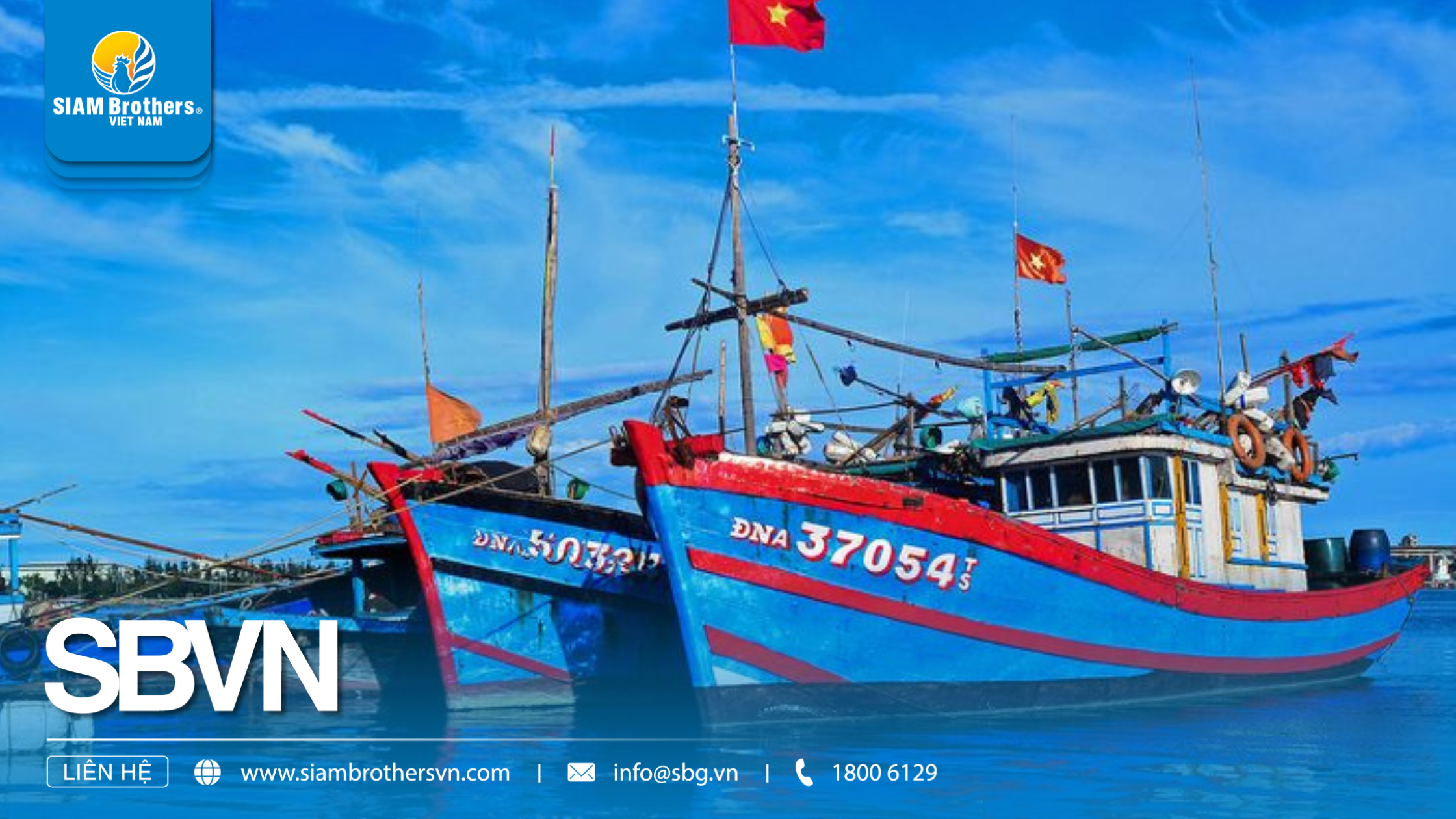
3. Step-by-Step Guide: How to Tie a Four-Strand Rope Safely
3.1. Step 1 – Secure One End of the Four-Strand Rope
Before tying, firmly secure one end of the four-strand rope to create a stable anchor point for handling:
- Wrap the rope end around a cleat, anchor ring, or boat hook.
- Keep the rope tight to prevent the strands from loosening.
- If using a new rope, soak the end in water to make it more flexible and easier to form knots.
Pro tip: Always work along the natural twist of the four strands to avoid tangling or fraying.
3.2. Step 2 – Create a Fixed Loop (Anchor Loop)
This step is crucial to hold the anchor or net rigging firmly in place:
- Hold the middle section of the rope with your dominant hand, and bend it into a circular loop.
- Pass the rope end through the loop to form a “reverse slip knot.”
- Gently tighten to shape the loop, ensuring it’s wide enough to fit securely around the anchor hook or net ring.
Note: Avoid making the loop too small — under heavy load, the rope may tighten excessively, making it difficult to untie later.
3.3. Step 3 – Form the Main Knot
This is the key stage to secure the entire rope structure:
- Thread the rope end through the anchor loop and pull gently toward the main body.
- Wrap the end around the standing part 2–3 times to increase friction.
- Insert the end through the second loop and pull tight.
- Test by pulling both ends firmly — if it doesn’t slip, the knot is properly secured.
Expert tip: For Polypropylene (PP) four-strand ropes, tighten firmly to offset the smooth surface texture and prevent slippage.
3.4. Step 4 – Secure and Inspect the Knot
After completing the main knot, inspect the rope before putting it to use:
- Pull in multiple directions to check that the knot doesn’t loosen.
- Trim excess rope, heat-seal or tape the end to prevent fraying.
- Perform a load test before setting sail or deploying the net.
- Common mistake: Failing to check knot tension after tying — this is the main reason for slippage in strong waves.
3.5. Expert Tips from SIAM Brothers Vietnam
To ensure maximum safety and durability of your four-strand rope, the SIAM Brothers Vietnam technical team recommends:
- Learn and practice 2–3 basic knots, such as the anchor knot or double hitch.
- Always tie the rope along its natural twist for structural stability.
- Inspect and replace ropes showing signs of wear, fray, or loss of elasticity.
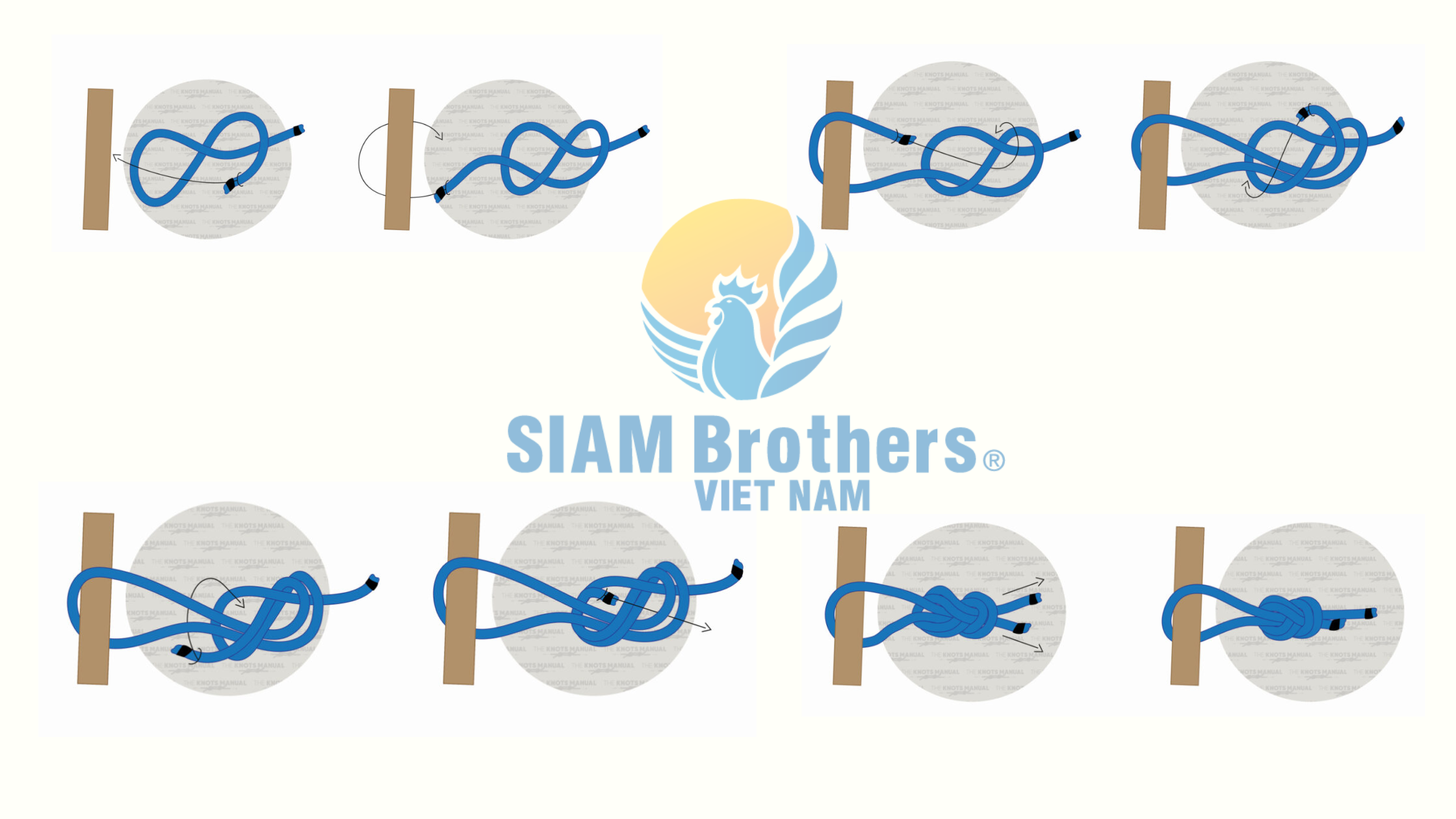
4. Safety Tips When Tying and Using Four-Strand Ropes on Boats
4.1. Inspect the Four-Strand Rope Before Use
Before anchoring or net rigging, carefully check the rope’s condition to avoid accidents:
- Examine the surface for fraying, cracking, discoloration, or salt damage.
- Check elasticity — good ropes remain slightly stretchable and soft.
- Ensure the four strands are still tightly twisted.
- Never splice with a different rope type, as it weakens load capacity.
Pro tip: Always keep 1–2 spare rolls of four-strand rope on board, especially during storm seasons.
4.2. Tips During Rope Handling on Deck
Proper technique ensures maximum rope strength and safety:
- Tie ropes on smooth, clean surfaces — avoid rusty metal or sharp edges.
- Wear protective gloves to prevent rope burns during tensioning.
- Keep the rope straight and tight; slack ropes reduce knot grip.
- Avoid tying ropes contaminated with oil or grease — it lowers friction.
Real-world tip: In deep or rough waters, use two parallel four-strand ropes to distribute tension and prevent strand breakage.
4.3. Rope Care and Maintenance at Sea
For long-term use, proper maintenance of your four-strand rope is essential:
- Rinse with freshwater after every trip to remove salt and sand.
- Air-dry in shade — avoid direct sunlight to prevent PP or PE shrinkage.
- Coil neatly along the twist direction for easy handling next time.
- Store in a dry, ventilated place away from direct heat or moisture.
Expert tip: Mark each rope after every use to track service life and replace on time.
4.4. Safety Recommendations from SIAM Brothers Vietnam
To ensure the highest level of safety when using four-strand ropes:
- Inspect ropes every 3–6 months or after long voyages.
- Use ropes that match the vessel’s load capacity — avoid undersized types.
- Train crew members in proper four-strand rope knotting techniques, especially in harsh weather.
- Always choose ropes from reputable brands with verified safety certifications and clear origins.
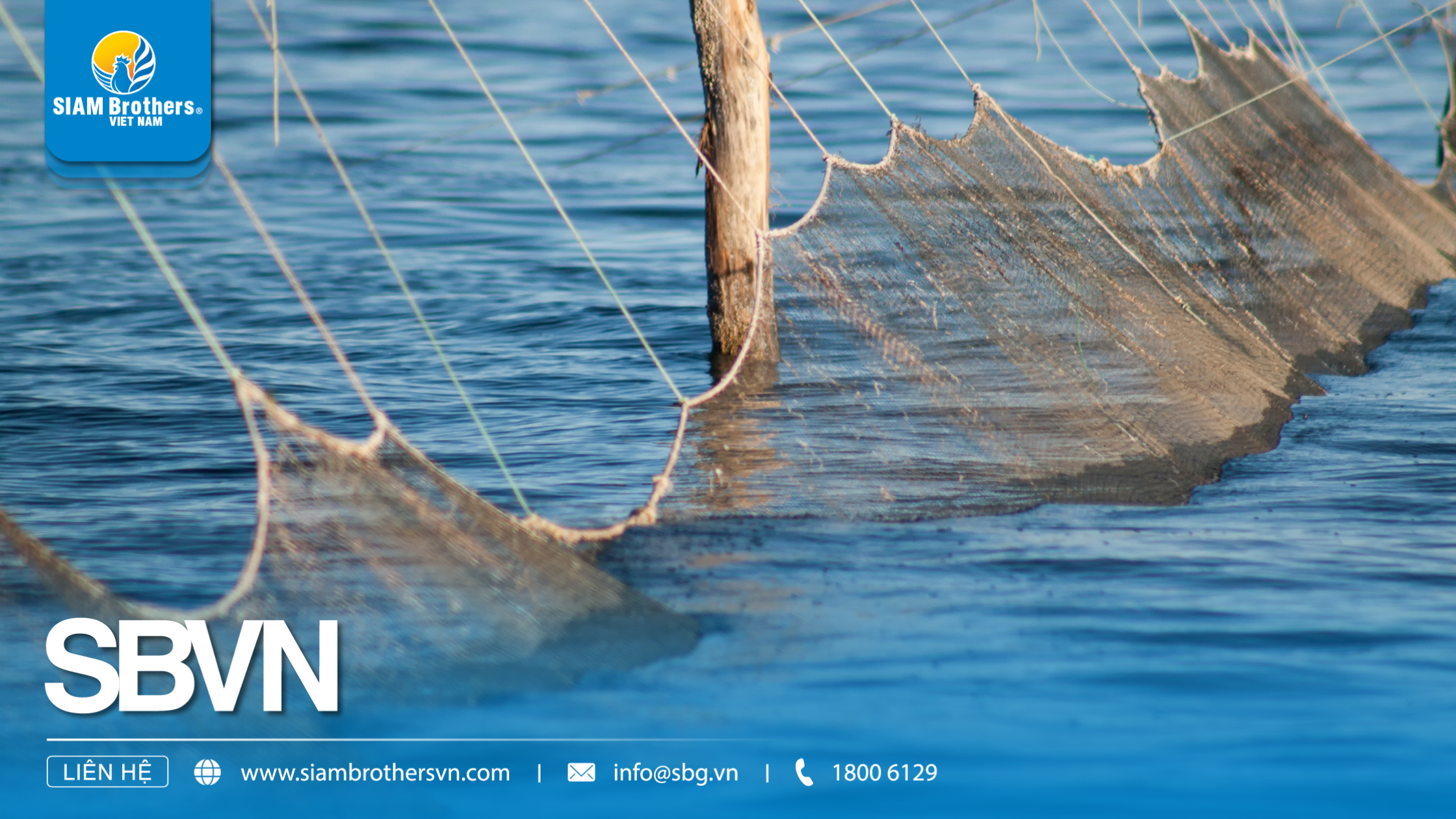
5. FAQs – Common Questions About Tying a Four-Strand Rope for Anchoring and Net Rigging
5.1. What Is a Four-Strand Rope and Why Is It Preferred for Anchoring and Net Rigging?
- A four-strand rope is made by twisting four main strands together, forming a tight and symmetrical structure that provides higher tensile strength and greater durability compared to conventional three-strand ropes.
- In anchoring or net rigging applications, four-strand ropes minimize twisting and tangling in strong water currents, ensuring safety, stability, and reliable performance for fishing and marine operations.
5.2. When Should You Replace a Four-Strand Rope to Ensure Safety?
- You should inspect your four-strand rope regularly — ideally after each sea trip or every 3–6 months of use.
- If you notice fraying, abrasion, fiber breakage, or discoloration, replace the rope immediately to prevent breakage during anchoring or hauling.
- Proper maintenance not only extends the rope’s lifespan but also helps you save long-term replacement costs.
5.3. Can the Same Four-Strand Rope Be Used for Both Anchoring and Net Rigging?
- Absolutely. A four-strand rope offers excellent flexibility and can be used for anchoring, hauling nets, tying buoys, or fixing rigging lines.
- However, to ensure maximum safety and load performance, you should select the right diameter and material — such as PP (Polypropylene), PE (Polyethylene), or Nylon — based on the specific load and environmental conditions.
5.4. How to Properly Maintain a Four-Strand Rope for Long-Term Use
- Rinse thoroughly after use, especially after contact with seawater, salt, or sand.
- Air-dry in a cool, ventilated place, away from direct sunlight and corrosive chemicals.
- Coil neatly to maintain the rope’s natural twist and elasticity. Avoid bending, crushing, or placing heavy loads on top of the rope to preserve its structure.
5.5. Where to Buy High-Quality Four-Strand Ropes
- Always choose suppliers with verified product quality certifications and clear sourcing information.
- In Vietnam, SIAM Brothers Vietnam is one of the leading manufacturers and distributors of high-quality four-strand ropes — internationally certified and trusted by fishermen and aquaculture enterprises nationwide for years.
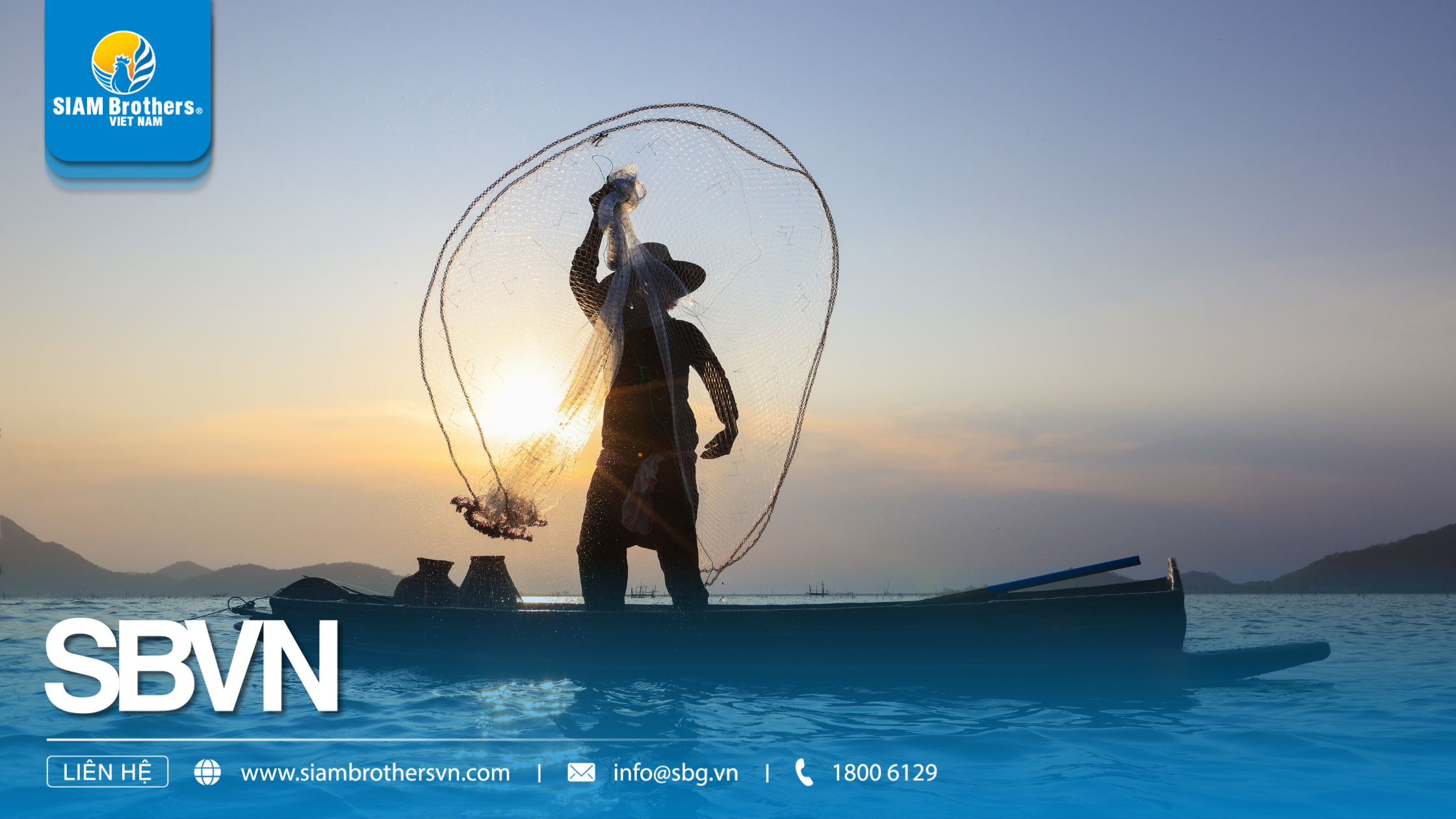
Mastering how to tie a four-strand rope properly not only enhances anchoring safety and net stability but also improves fishing efficiency and protects marine equipment from damage.
With its strong structure, durability, and excellent anti-twist performance, the four-strand rope remains the top choice for all marine applications.
For long-lasting results, always use premium four-strand ropes from trusted brands and follow proper tying and maintenance practices.
Explore international-standard four-strand ropes from SIAM Brothers Vietnam — the trusted partner of fishermen and aquaculture businesses across the nation.
Source: SIAM Brothers Vietnam
Contact us:
► Address: 5th floor, VRG Building, 177 Hai Ba Trung Street., Xuan Hoa Ward, Ho Chi Minh City, Vietnam
► Hotline: 1800 6129
► Tel: (+84) 28 38 912 889
► Email: info@sbg.vn
► Follow us for more details at: Facebook - Zalo OA - Tiktok - Youtube - LinkedIn
Download SBVN ID app here:
► CHPlay
► Appstore






